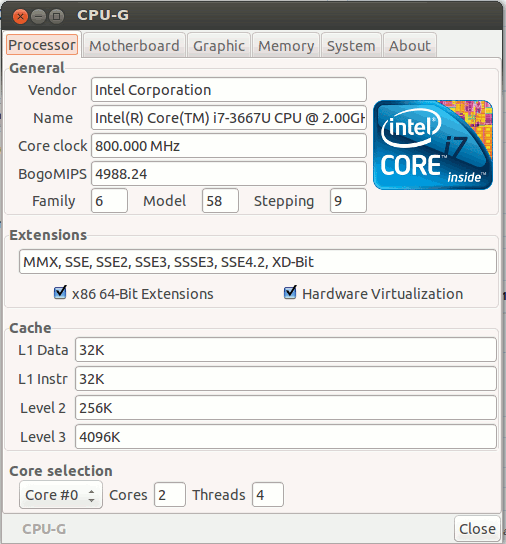
It shows basic stats like CPU speed, model number and the various L family cache sizes, but also more advanced details like the number of transistors on the die, the multiplier size and the exact voltage and TDW it uses.ĭo I really need to know all of this information? No. Like the Windows app it takes its inspiration from, i-Nex serves up a slew of unashamedly in-depth stats on your system hardware, taking in everything from your CPU to your sound card along the way.Īnd when I say ‘in-depth’ I’m not understating.

To aid me I turned to an app similar in design and aim as the CPU-Z I favoured all those years ago, but available for Linux.Įnter open-source app i-Nex. I recently needed to check up on the capability of one of my ageing netbooks (chiefly to compare the Intel Atom within it to the CPU of an early Samsung Chromebook). But Linux, ever more versatile when it comes to accessing this sort of information, meant I was never more than a few commands away from finding out what I needed to know, when I needed to know. While it was never the prettiest of apps, it was always preferable over that of Windows’ own system profile tool!Īs I got into Linux I largely stopped obsessing over clock speeds, cache sizes and I/O rates. This handy utility armed me with all the info I needed to track down a missing motherboard driver or ensure I was ordering the correct RAM for an upgrade.ĬPU-Z served up an insane amount of information - including on topics that the then-fledgling Wikipedia had yet to learn. Indulging my fixation for technical trivia during my Windows days was easy thanks to a freeware application called CPU-Z.

My name is Joey-Elijah Sneddon and I used to be a hardware stat hound.įrom being able to recite the relative speed of my processor’s front-side bus and the prefetch buffer depth of the RAM on my GPU, to knowing more useful information, like the BIOS version of my motherboard: if I could learn it, I would.


 0 kommentar(er)
0 kommentar(er)
